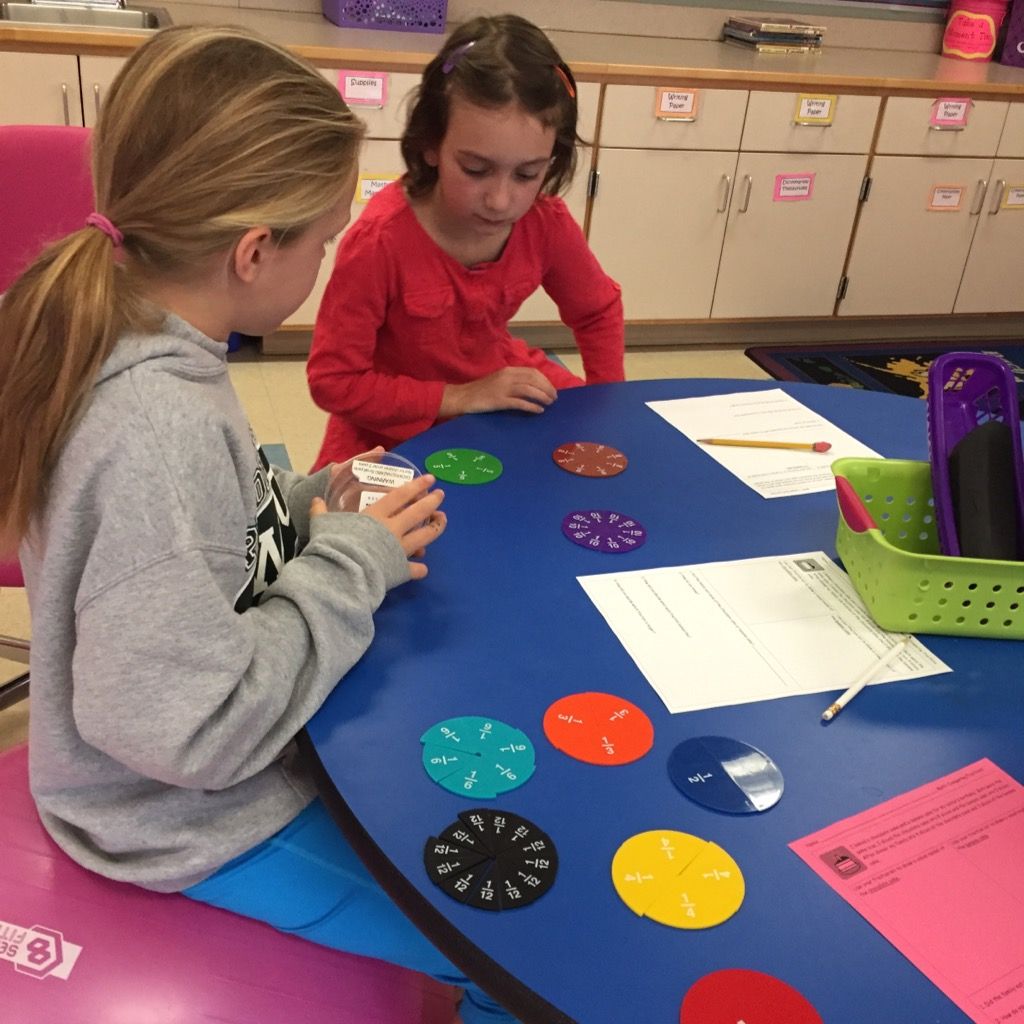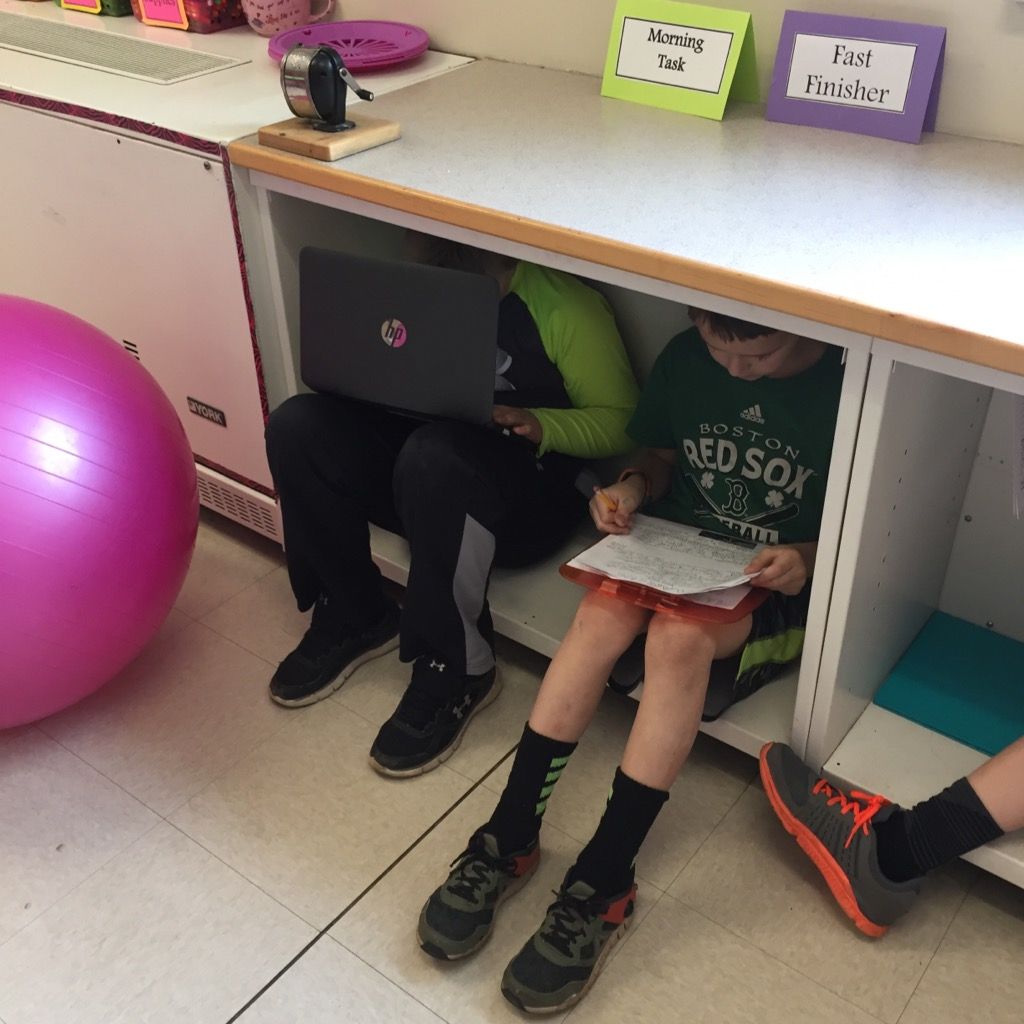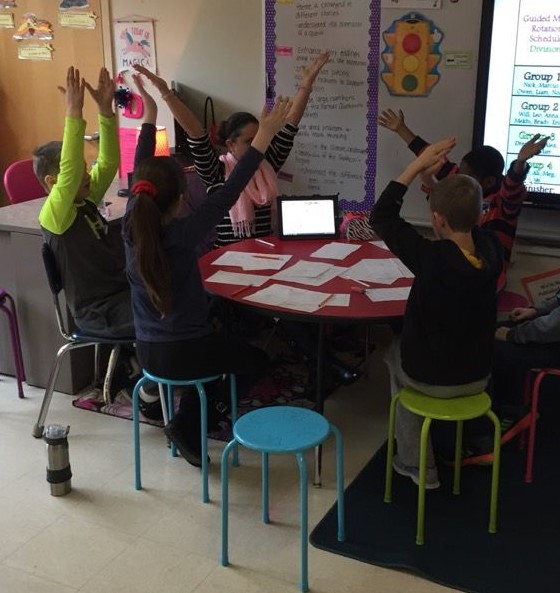We’re in the middle of a guided math lesson and my students are scattered around the room like two dozen Cheerios that just exploded out of their box. Some are in groups, backs arched over skill-specific games, giggling and rolling dice. Others are hidden, tucked away in cozy nooks within the room, exploring and discovering in pairs. A few are sitting around a bright, McIntosh-apple red table, bouncing on yoga balls as they work together with manipulatives, making math make sense.
Soon, I will ask students to rotate, moving with them to provide the direct instruction each one needs.
This is personalized learning at its best—and it’s not nearly as chaotic or difficult to pull off as it may sound. It also requires little-to-no technology. With a few simple strategies in mind, students can have a unique experience, tailored to their needs and interests.

So here are four tried-and-true techniques to get you started, wherever you are in your own personalized learning journey.
Create Community First
I begin every year with a personal reminder of Maslow’s Hierarchy of Needs. Abraham Maslow explained that all humans have basic needs they need met in order to reach self-actualization— basically, to be their best self. It is critical to remember that without students’ basic, physiological needs being met (food, shelter, love, and belonging) learning will be difficult if not impossible.

It is our duty as teachers to ensure that students have these needs met, otherwise our work in the classroom will achieve little. Students must feel safe, as well as free from harm and judgment.
Greeting students each day is one way to create a welcoming environment where each student feels safe to enter. I make use of techniques from Responsive Classroom, such as Morning Meeting, which can aid in creating an atmosphere where students feel heard and valued. After morning routines are completed, my students and I gather on the rug. We greet one another, share how we’re feeling, and have open dialogue about the things that are going on at school and at home. Morning Meeting is a safe space where, little by little, we each remove layers of ourselves, revealing our inner thoughts, fears, and joys with the class, helping to break down any barriers and show our truest self to one another.
These meetings can take a variety of forms, and important academic skills can be creatively woven throughout them. Sometimes my students and I play detective and find hidden errors in my Morning Message; we share strategies for solving math problems mentally; we even respond to inferential questions related to the novels we read. We also laugh, share stories, and continue to foster friendships and build a community together, one meeting at a time.
Allow for Flexible Seating
In my fourth grade classroom, I have forgone traditional desk and chairs, replacing them with colorful, round tables, rainbow-colored stools, hot pink yoga balls, beanbags, and butterfly chairs. I do not believe that desks and chairs are most conducive to learning, nor does it mirror what the work-world looks like.

Instead, I want my students to be engaged in conversations where they can see their peers’ eyes, learn to read body language, listen, share, and collaborate. I have a duty to prepare them for what lies ahead, and so an environment with flexible seating and workspaces allows them to work like the adults they are becoming. More than that, however, it gives them power and control. Something as simple as having choice when they enter the room each day allows them to take the driver’s seat of their learning and find what works best for their learning style. This personalized approach to seating and workspace allows my students to maximize their focus and output, as they are working with tools that best aid them in their learning, while also motivating them, which is just as important!
Provide Individualized Support Based on Data
With community established and comfortable workspaces and tools available for each of my students, I can then focus on guided instruction which is differentiated and personalized. While my class is frequently engaged in small group work, it is important to remember that personalizing learning is not as simple as creating differentiated groups and having them complete the same task. Rather it’s about giving each group a unique task, designed especially for their skill-level and need.
Don’t get me wrong—this type of personalization takes time. Teachers need to understand what students need, what tools must be available to help them access the curriculum, and have the time to create activities that allow each group to have success.
Formative assessments are an essential starting point. They help me continuously check-in on my students and reassess who needs what from me. These “quick checks” or “Show Me What You Know” tasks can take many forms: “Exit Tickets” at the end of a session or “Admissions Ticket” at the start of a session are easy ways to get data that can drive your instruction. Remember quality is more important than quantity. Instead of asking fifteen questions, attempt to get at the heart of the concept with three to five thoughtful questions.
Focus on Project-Based Learning
Once the data is collected, then comes the fun part: Planning activities with my students’ needs in mind. I consider this the true art of our profession. I approach all guided instruction time with the idea that there is not a specific road map in front of me; I know where I want to take this group, but my students are navigating and I’m continuously making on-the-spot decisions about support based on their output. The most powerful moments can happen during these times when students feel safe to express their confusion, confident enough to ask for a challenge, or brave enough to take the lead and model and explain to a group member.

It is vital to mask the sometimes drastic levels of abilities within the classroom and project-based learning (PBL) is a great way to disguise learning and skills levels as it allows students to work at their own pace and take part in authentic application of skills.
For the past three years, my fourth graders have taken a journey with WRiTE BRAiN Books. WRiTE BRAiN Books is a narrative and creative writing course in the art of children’s book authoring, where students become published authors of their very own children’s books! Throughout the journey, my students worked in groups, with varying levels of support, to write beautiful narrative stories that correspond to fully illustrated, wordless books. This example of project-based learning allowed me to give to each student exactly what he/she needed, while all students worked on the task of publishing a book.
By creating a personalized environment for learners, students are able to reach their full potential and feel successful. Additionally, we teachers are also able to know our students on a personal level, and unlock the abilities that lie within each of our students!


